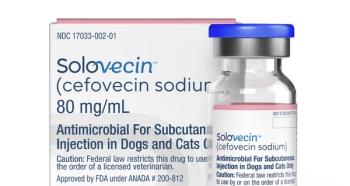
Journal Scan: Xylitol ingestion in dogsa retrospective evaluation of the consequences
Hospitalization and continued monitoring are recommended, even if a patient presents as euglycemic after ingestion.
Why they did it
As the popularity of xylitol as a sugar substitute increases, so does the risk of accidental ingestion by dogs. The authors of this retrospective evaluation sought to determine the prevalence, clinical signs, selected serum chemistry profile values, treatment and outcome of dogs known or suspected to have ingested xylitol.
What they did
As part of a retrospective evaluation, the researchers evaluated data from 192 dogs presented to three university teaching hospitals for known or suspected xylitol ingestion between December 2007 and February 2012. When the quantity of xylitol ingested was unknown, the maximum possible quantity was recorded.
What they found
Xylitol-containing gum was the product ingested in 96% of the cases. Each piece of gum was assumed to contain 0.3 grams of xylitol if xylitol was not listed as the first sugar alcohol and 1 gram if it was listed as the first sugar alcohol. The study authors found that 20% (n = 39) of dogs had clinical signs at the time of presentation; vomiting was most common (n = 25). The median estimated ingested dose of xylitol was 0.32 g/kg, and the amount of xylitol ingested appeared to correlate to severity of clinical signs but was not necessarily associated with the degree of hypoglycemia.
Overall, 15.6% (n = 30) dogs became hypoglycemic at some point during their hospitalization (glucose ≤ 60 mg/dl [3.3 mmol/L]). In 11 of 139 dogs, the blood glucose concentration nadir was not reached until ≥ 12 hours after admission. One dog continued to have seizure activity even after correction of hypoglycemia and required anticonvulsant therapy; the dog was successfully weaned off the anticonvulsant one week after discharge from the hospital. The authors also noted that there was no difference between dogs that were symptomatic or asymptomatic with respect to blood glucose concentration at presentation, lowest blood glucose concentration during hospitalization, body weight or age. There was no significant difference between the amount of xylitol ingested between dogs that developed hypoglycemia (0.23 g/kg) and those that remained euglycemic (0.35 g/kg, P = 0.25).
A serum chemistry profile was performed in 71.3% (n = 137) of the dogs, and 21.9% (n= 30) of these dogs experienced an elevation in the alanine aminotransferase (ALT) activity or serum total bilirubin concentration during hospitalization. Four of these dogs had an ALT activity > 800 U/L. None of these four dogs were hypoglycemic on presentation. There was no significant difference between the amount of xylitol ingested between dogs that developed elevations in ALT activity and/or total bilirubin concentration (0.42 g/kg; range 0.04 to 2.86 g/kg) and those with ALT activities and total bilirubin concentrations within the reference range (P = 0.07). The authors found, however, that dogs with elevated ALT activity and/or serum total bilirubin concentration experienced a significantly more profound hypoglycemic nadir. There was no difference among dogs with increased versus normal liver values with respect to age, body weight or initial blood glucose concentration.
The median duration of hospitalization was 18 hours (n = 122; range 1 to 70 hours), and all of the dogs were discharged from the hospital. At 28 days, 158 of the dogs were known to be alive, and the rest were lost to follow-up. Among the 60 dogs with recheck data, dogs with elevated liver values at the time of dismissal were clinically normal and had values that had decreased by the time of the recheck.
Take-home message
All dogs that ingest xylitol should be hospitalized for serial monitoring of blood glucose concentrations as this can decrease even in dogs that are euglycemic at the time of presentation. Dogs that do not develop evidence of liver failure after xylitol ingestion have an excellent prognosis.
DuHadway MR, Sharp CR, Meyers KE, et al. Retrospective evaluation of xylitol ingestion in dogs: 192 cases (2007-2012). J Vet Emerg Crit Care 2015;25(5):649-654.
Link to article:
Newsletter
From exam room tips to practice management insights, get trusted veterinary news delivered straight to your inbox—subscribe to dvm360.






